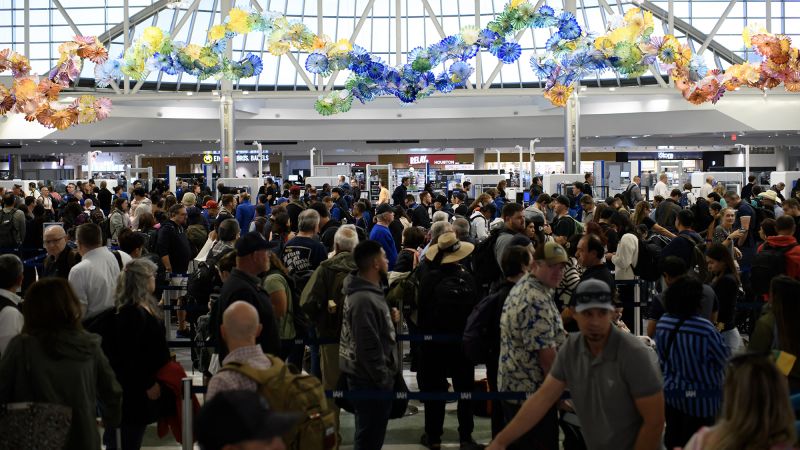Copyright Cable News Network

Airline passengers were already looking at higher fares and packed planes this holiday season. But the holiday headaches might get much worse as the government shutdown causes flight reductions at major airports. The Trump administration will reduce traffic at 40 airports across the United States starting Friday if the shutdown continues — meaning holiday travels could be much more fraught this year. Airlines are already starting to cancel upcoming flights a few days at a time, though it’s hard to say how long these cutbacks will last. “They’re doing that because we don’t know how long this is going to last and they’re not going to go and take out flights automatically that they don’t necessarily need to,” travel industry expert Zach Griff said. “That’s going to cause a lot more stress for travelers, but there really isn’t a better way to do it. Still, it is not going to be a pleasant experience until this is finished.” Fares were already forecast to be up 7% to 10% over a year ago during the holiday season, according to data from discount travel site Going.com. Strong travel demand and a pullback on capacity by some low-fare carriers, such as Spirit Airlines, have largely propelled the rise in prices. (Spirit is once again in bankruptcy and was cutting its schedule as a cost-cutting measure before the Federal Aviation Administration-demanded flight restrictions were announced.) Cutting back flights will likely pressure prices higher. Based on flight schedules that have yet to be finalized, aviation analytics firm Cirium estimates that there could be 1,800 fewer flights a day with the anticipated travel restrictions, reducing supply by more than 100,000 seats up to as many as 268,000. Which flights most at risk The flights most at risk of being canceled are feeder routes from smaller regional airports to the airlines’ hubs, as flights between bigger cities are more profitable. So while the nation’s 40 largest airports are facing the government-mandated flight reduction, travelers at smaller airports are the ones who could be stranded. Passengers with canceled flights were already entitled to a refund if they decide not to take a different flight. But finding another seat can be difficult, especially if this lasts into the holidays, or if bad weather causes flight cancellations elsewhere. “This will be disruptive, and it’s not good for customers, there’s no question about that,” said Griff. The good news, such as it is, for travelers is that the nation’s three largest airlines – American, Delta and United Airlines – have all announced they will give refunds to passengers who cancel their flights in advance. Travelers can get a refund from those three airlines, even if their flight isn’t one of those affected and if they have what would normally be a non-refundable ticket. The hope by some industry observers is that the government shutdown ends and the schedules return to normal before the week of Thanksgiving, which is often the busiest week of the year in terms of flights. “Thanksgiving is sort of a nonnegotiable for a lot of travelers,” said Katy Nastro, spokesperson for Going.com. “Fingers crossed that this doesn’t last well into next week. I would really be shocked if it did, because we’re in for a whole lot of travel pain if that’s the case.”



